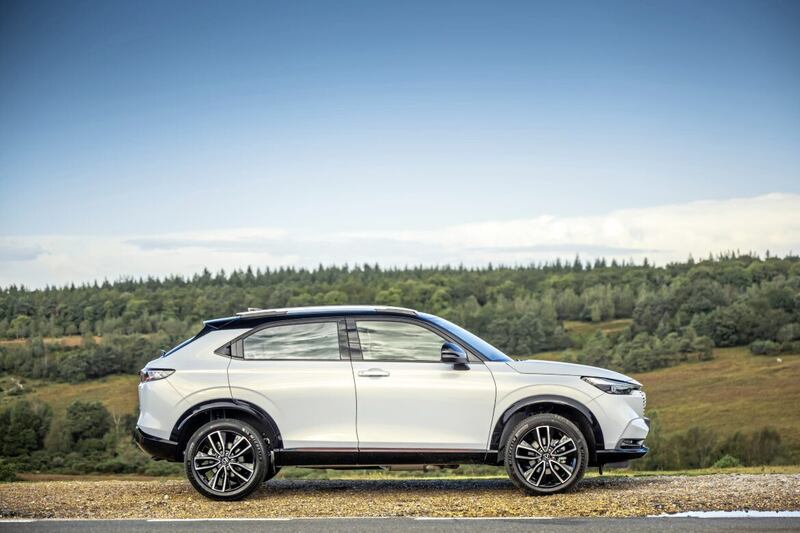LIKE divining Liz Truss's whereabouts on Monday afternoon, when Penny Mordaunt was able to confirm the besieged prime minister wasn't in fact hiding under a desk, defining the essence of what a Honda is can be tricky, writes William Scholes.
Honda makes lawnmowers and motorbikes, jet planes and boat engines. It makes a slightly creepy humanoid robot. The engine in Max Verstappen's Red Bull Formula One car is a Honda.
And then there are the actual cars. This isn't entirely straightforward either. At one end there's the NSX sports car, a £150,000 two-seat sliver of speed and bleeding-edge hybrid tech that's just gone off-sale; at the other is the resolutely pragmatic and humdrum Jazz, beloved of retired people and those who really aren't that bothered about driving.
In between these two extremes are the diverse pleasures of the toy town-cute electric city car Honda e, the Civic family car and the CR-V SUV. It isn't necessarily the most coherent model line-up, but that has long been the Honda way; nor does it seem to have done it any harm along the way.
If there's a thread that ties all these endeavours together, it's arguably found in Honda's conspicuous commitment to engineering and innovation. This doesn't make a Honda a cheap option, but it does it make it one with a certain depth of quality.
Which brings us to the HR-V, a Honda nameplate that has been around for a while and which has been recently revived in the shape of a small family hybrid SUV.
That means it's a rival for the Ford Puma, Nissan Juke, Renault Captur, Peugeot 2008 and their ilk. But where they are offered with a variety of drivetrains, the HR-V is hybrid only.
It's a particularly clever set-up too, displaying a typically Honda approach. You get a 1.5-litre petrol engine, two electric motors - one a generator, the other for propulsion - and a small lithium-ion battery.
The car can drive short distances in 'EV mode', but typically the car works in 'hybrid mode' with the petrol engine feeding power to the generator motor, which in turn supplies the electric propulsion motor. Driven thus, the petrol engine isn't directly turning the wheels; that happens when, for example, you accelerate hard and a fixed-gear transmission drives the wheels via a lock-up clutch.
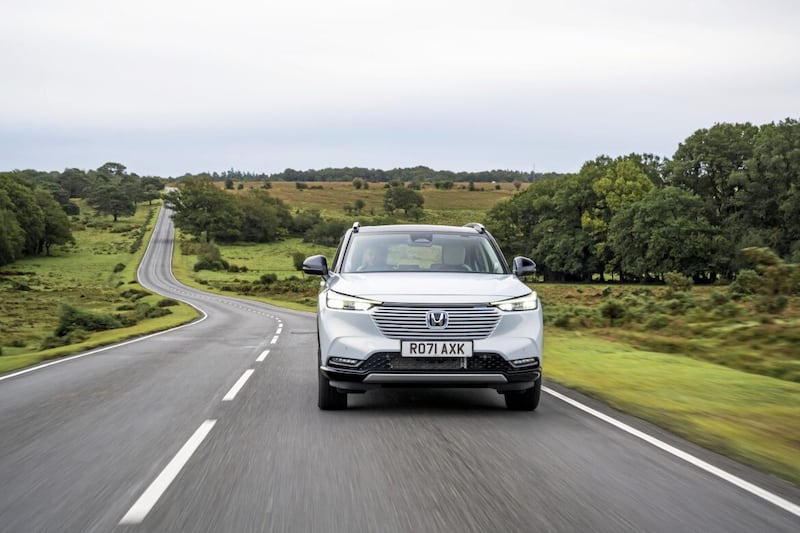
It's a complex enough drivetrain, in other words, but in practice the juggling of drive modes is sorted out by the car's computers - you simply drive the HR-V as if it were a regular automatic.
That's the theory, at least. In practice, it falls down a little as a 'regular automatic' as it uses a CVT transmission. These often work well, but in the HR-V's case I found it more eager to engage in screaming engine noise and sustained high revs than the Jazz, with which it shares this drivetrain.
It also shares the Jazz's platform, and gets Honda's trademark 'magic seats' in the back. This clever arrangement allows the seats to be folded flat in a conventional fashion or tipped upwards to free vertical space - a genius way of carrying taller objects.
It's not all good, though. For a car of this size, there is an enormous amount of rear legroom. Maybe too much, odd as it may sound. The rear roofline is low, so anyone lanky enough - including your correspondent - to benefit from the lounging space will find their head scraping the ceiling. And that Jazz platform means the back seat isn't as wide as many rivals.
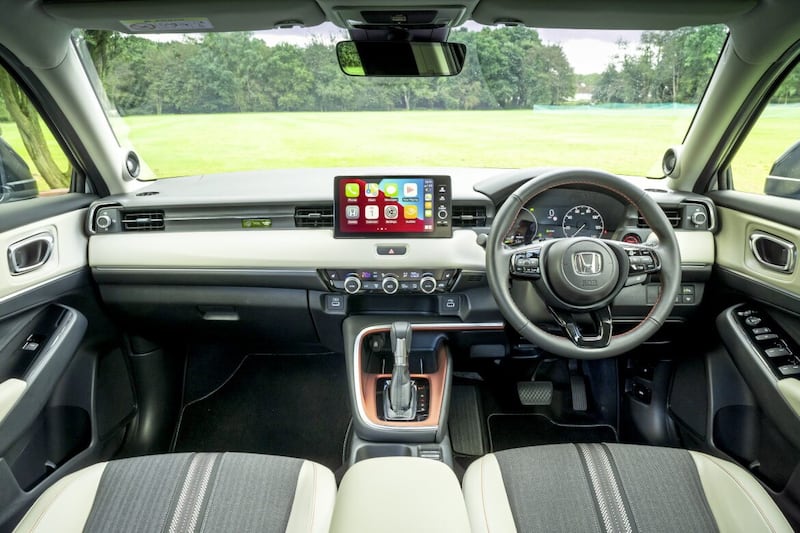
I suspect most owners would trade some of that overly generous legroom for a larger boot. Its volume is 319 litres - less, at 304 litres, on models with the upgraded sound system - and that isn't wonderful. The rival Skoda Karoq offers 521 litres, and still offers reasonable back seat accommodation.
The back seat/boot layout is something that will either bother you or not. Look past it, and you'll find a high quality interior with a number of thoughtful touches. The ventilation system is first class and the infotainment system - for a long time, an area in which Honda lagged - dead easy to interact with.
Crisp, easy to read dials, a steering wheel that is a pleasure to hold and actual knobs and switches for the heating controls that work with tactile precision convey a sense of quality. Comfortable seats and a good view out make this a relaxing car in which to travel.
It's a smart looking car too - important when up against sharply-styled rivals like the Juke and 2008. I like the body colour front grille treatment and slender lights, and Honda has obviously opted to give the HR-V a sporty roof line, albeit at the already-mentioned expense of rear headroom and boot space.
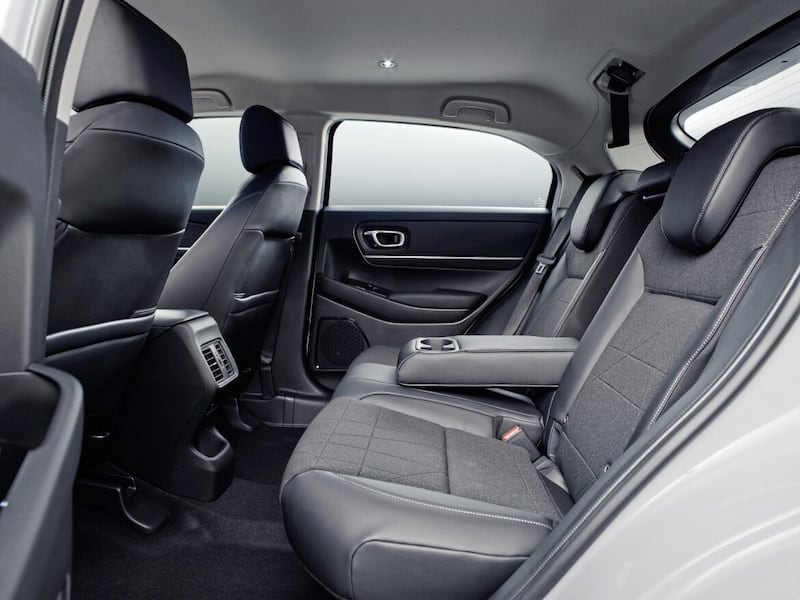
The HR-V might look mildly racy, but its driving experience is unlikely to get your pulse racing. It steps away from a standstill sharply enough, courtesy of that electrified drivetrain, but runs out of puff quickly (0-62mph is a scarcely scintillating 10.6 seconds, top speed 106mph) and the engine noisy when leaned upon.
Best to take a leisurely approach, which seems to better suit the Honda's complex drivetrain. It is efficient, however, with an easy 50mpg achieved in my 'real world' test conditions.
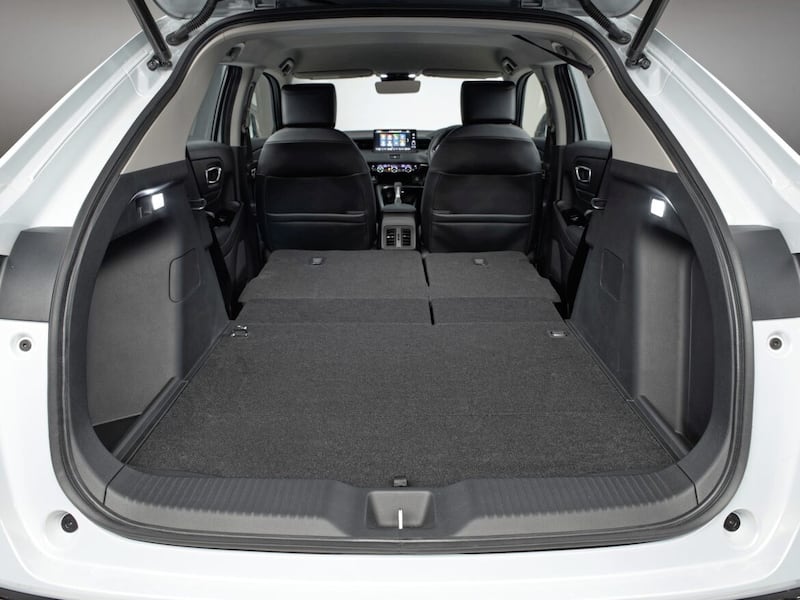
There is a decently premium feel to the HR-V, with the tone set by the styling and continuing with the drivetrain and interior flourishes. That goes some way to justifying the Honda's starting price, which ranges from £29,410 to £34,850 across three grades.
However, that does push it into the territory of larger vehicles. Honda's own CR-V starts at £32,815, for example, and then there's other talented family SUVs like the Kia Sportage and Hyundai Tucson.
If you already buy into the Honda ethos of doing things a little differently, then the HR-V makes perfect sense. Others might need more persuasion that it represents value for their family's money. Either way, it's another intriguing Honda.
